Bespoke Partnership
Israel Revealed: the remarkable rise of Israeli design
This month's issue of Wallpaper* includes a copy of Israel Revealed, a special supplement on Israeli design, architecture and style, produced in association with high-end Israeli quartz surface manufacturer Caesarstone. As a leading supplier of vanities, wall cladding and flooring to both residential and commercial clients and, increasingly, a powerhouse in the design world, Caesarstone now sells its product in over 50 countries worldwide. With an eye for young talent, the company also works with designers, curators, architects and fabricators to create one-off quartz-stone sculptures, furnishings, events and wall art. In 2014, Wallpaper* worked with Caesarstone on a piece for our annual Handmade exhibition at Milan’s Salone del Mobile, and it also wowed us with its outstanding collaboration with young design duo Raw-Edges, shown at the same fair. So when Wallpaper* was looking for a partner for our special Bespoke project, Caesarstone was the perfect fit. To celebrate the launch of this exciting supplement, we will be hosting a party on 18 December in Tel Aviv. Here we present interviews with the current crop of gifted architects and interior designers that are shaping the state of Israel’s new skyline with a brave, bold vision while continuing to explore the situated modernist style and adapting modern trends to the country’s cultural, climatic and local traditions
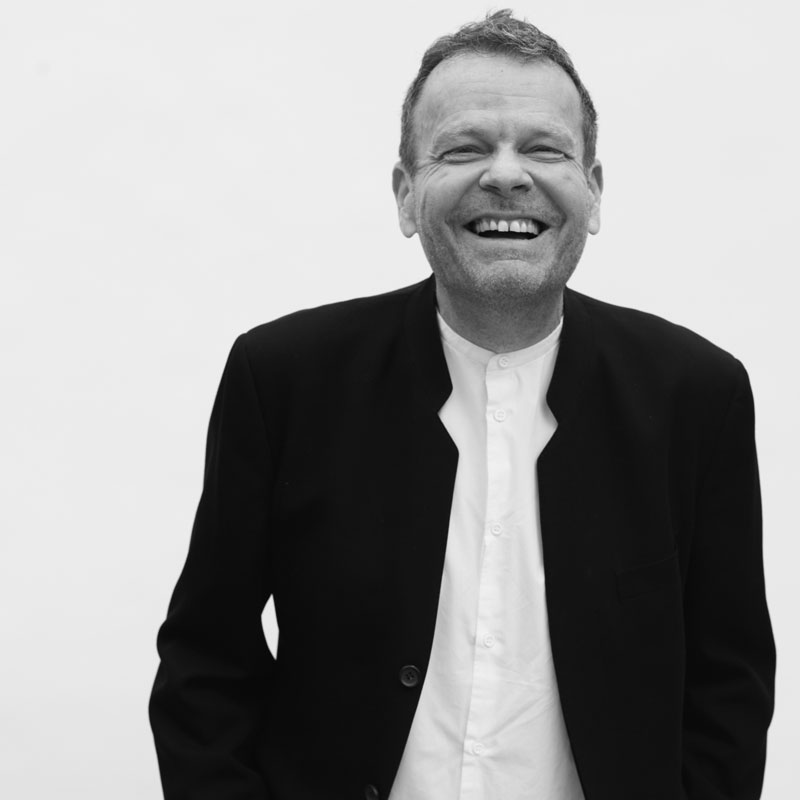
Alex Meitlis
Alex Meitlis Architecture & Design
Refusing to recognise the borders between architecture and interior design or industrial design, Alex Meitlis specialises in total environment design. Notable work includes the Ottolenghi chain in London, the Savion house just outside Tel Aviv, and the behavioural science laboratories at Ben Gurion University.
How has the architecture of Israel influenced your work?
I am a modernist that grew up in Tel Aviv surrounded by the Bauhaus buildings They had an impact on my designs and also the local Palestinian architecture with its amazing respect for the weather and local landscape.
Israel, particularly Tel Aviv, is spoilt for modernist architecture. Which is your favourite modern building in Israel?
In Zichron Ya’akov there is a sanitarium built by Yaakov Rechter in the 1960s. It is one of the few modernist masterpieces built in Israel.
What are the advantages of working as an architect in Israel?
We are a country built by refugees who arrived with a forward-looking attitude. All rules are encouraged to be broken.
Among contemporary Israeli architects, whose work do you admire most?
Shimon Shapiro is our local secret. He is Israel’s Frank Lloyd Wright and, having taught at Bezalel for over 30 years, has educated all our best creators. He taught us all to respect both our site and our client, and also to listen to what clients are really saying when they talk, the subconscious as a part of the creative process.
How does the climate impact on your work and how does it affect what you design?
I have a passion for shade. It is essential for life in a place of intense heat. So my architecture is all about where the sun is and when.
Do you like to work with materials and craftspeople indigenous to Israel?
My studio is in Florentin, a working class suburb of Tel Aviv where the furniture workshops are all centred. All the furniture, lighting, flooring and other fixtures I use for my spaces are manufactured within 150m of my office.
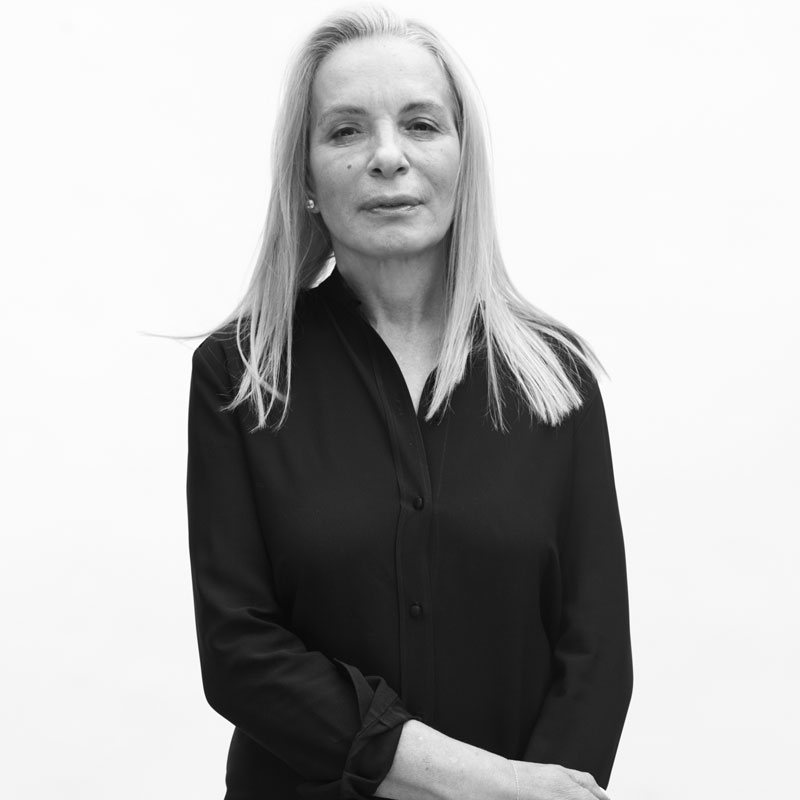
Orly Shrem
Orly Shrem Architects
Orly Shrem is one of Israel’s most prolific and respected architects. She established her practice in 1985, and key projects include the interior design of the Rothschild 1 residential tower in downtown Tel Aviv.
How has the architecture of Israel influenced your work?
I am especially influenced by the Arab buildings and they way they use light, as well as the Templer houses with the tiled roofs.
Israel, particularly Tel Aviv, is spoilt for modernist architecture. Which is your favourite modern building in Israel?
The Habima Square auditorium, completed in 1957. It's timeless, elegant and up to date.
What are the advantages of working as an architect in Israel?
The advantage is the people, coming from all over the world, the outdoor living and the amazing sky. Tel Aviv is noisy and crowded but it’s beautiful. My office is located opposite the sea and it’s a great inspiration.
Among contemporary Israeli architects, whose work do you admire most?
I admire the 1950s generation who brought international architecture but remained local with a tight budget.
How does the climate impact on your work and how does it affect what you design?
The light has a major impact on interior design, but these days we are able to offer bigger windows and better air-conditioning. Outdoor living is as important as the indoors, so for me, designing a house should always mean integrating outdoor and indoor life.
Do you like to work with materials indigenous to Israel and if so, which particular materials?
I love all local natural stone such as limestone, and especially a sandstone called kurkar.
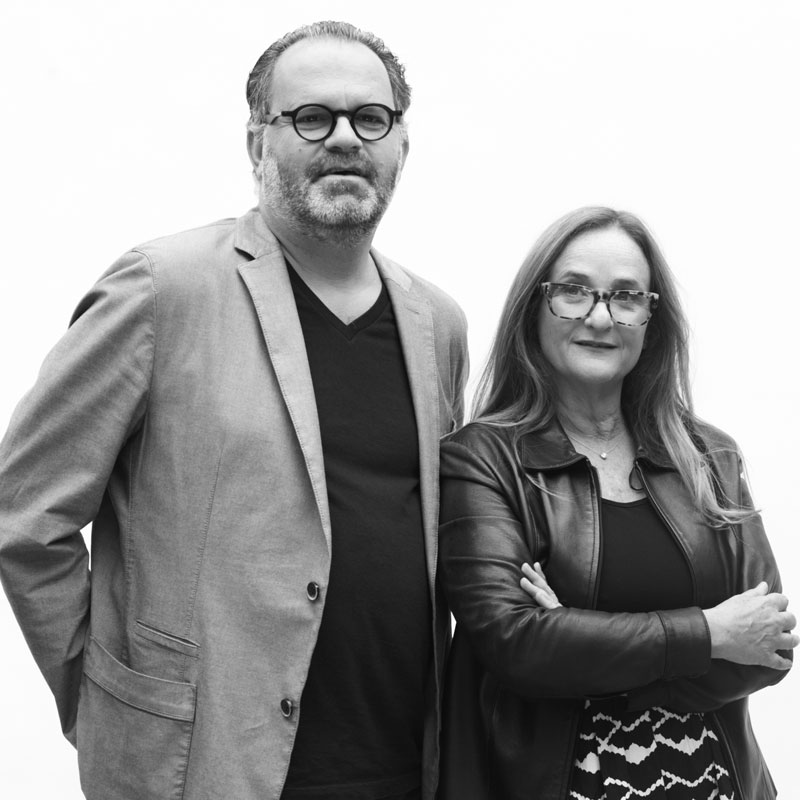
Alon Baranowitz & Irene Kronenberg
Baranowitz Kronenberg Architecture
Founded in 1999 by Alon Baranowitz and Irene Kronenberg, the studio works internationally providing architectural and interior design services for the private and public sector. Notable projects include the Sir Albert Hotel, Amsterdam, Israel Museum Shop, and the Pastel brasserie at the Tel Aviv Museum of Art.
Israel, particularly Tel Aviv, is spoilt for modernist architecture. Which is your favourite modern building in Israel?
The Mivtachim sanitarium in Zichron Ya'akov by Yaakov Rechter.
What are the advantages of working as an architect in Israel?
Lack of discipline leads to experimental design!
Among contemporary Israeli architects, whose work do you admire most?
Al Mansfeld for his poetics, conviction, vision, sketches and for giving us the Israel Museum in Jerusalem.
How does the climate impact on your work and how does it affect what you design?
We sweat a lot! But really, it is as much a part of our context as culture, politics, time and place. Our designs strive for the shadows and the gusts of the Mediterranean.
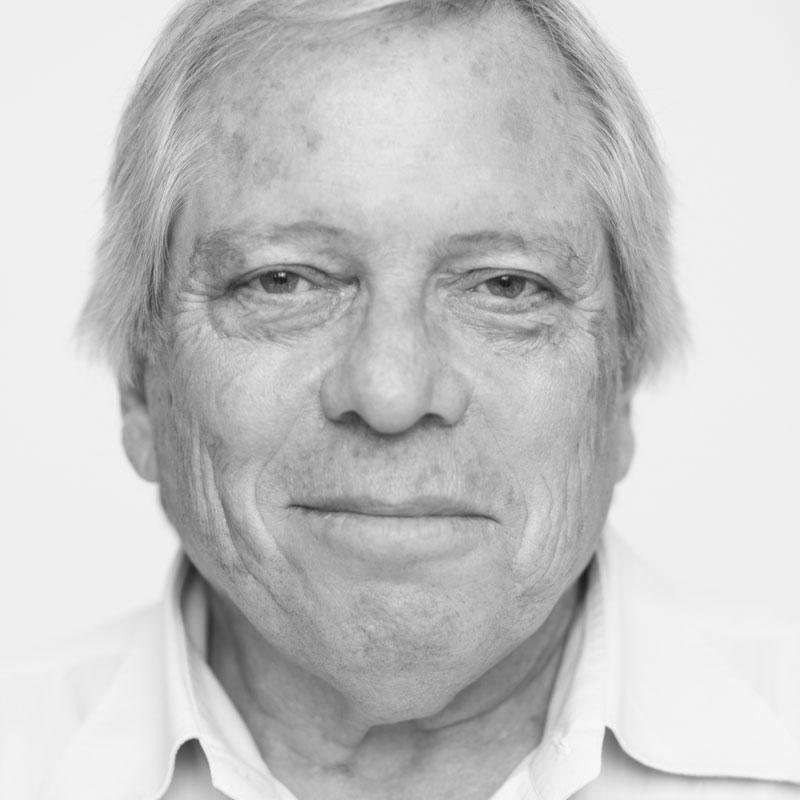
Moshe Tzur
Moshe Tzur Architects
Moshe Tzur founded his practice in 1978, specialising in grand scale, urban projects. A development featuring seven high-rise towers, making up some 1,000-odd residential units in the Bavli-Dekel area of north Tel Aviv, was recently given the green light.
How has the architecture of Israel influenced your work?
In the sense of cultural and spatial heritage, and in the ecology of place, climate and culture of the Mediterranean and the Middle East, we view ourselves as contextual architects and urbanists. That is, we do not consider visual eclecticism as a medium of design within the dense, complex and culturally charged situations in which we are called upon to design. In a most profound sense, we are motivated by the creation of the experience of urban place in the inter-relationship of architecture, landscape and urban structure. That is why we frequently employ the term ‘landscape urbanism’ as a distinctively Mediterranean sensibility. Landscape urbanism is also one medium for facing the contradictions of the paradox of vertical urbanism. The reconciliation of these contradictions continues to engage our design thinking.
Israel, particularly Tel Aviv, is spoilt for modernist architecture. Which is your favourite modern building in Israel?
My favourites would be the Israel Museum of 1965 designed by my teacher and early employer Al Mansfeld, and the Azrieli Center towers, designed by the late David Azrieli (along with Eli Attia and Avraham Yaski).
What are the advantages of working as an architect in Israel?
Where else can you find such inspiring situations? My parents were survivors of the worst period of the Holocaust in Europe. They came here to participate in the project of building the land. The cultural complexities are truly unique. Architecture here is the challenge to enlarge the perspective of the client to accept this public responsibility. This may mean making a commitment to upgrading the material investment in the public realm (as at Gav Yam in Herzliya) or in creating dual spaces – both public and private - as at the courtyard entrance to the Be’eri Nahardea tower in Tel Aviv.
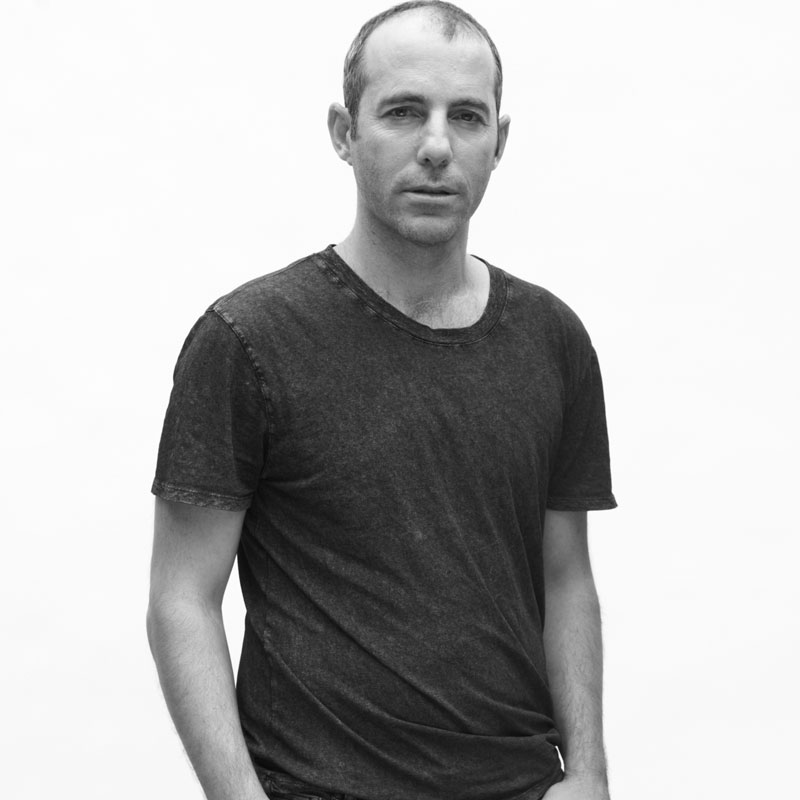
Pitsou Kedem
Pitsou Kedem Architect
Founded in 2002 and aiming to creating excellent architecture that benefits people and the environment as well as enriching Israel’s cultural experience, Pitsou Kedem consists of 11 architects and specialises in residential and commercial projects, including Tel Aviv’s B&B Italia and Bulthaup showrooms and Taizu and Bindella restaurants.
How has the architecture of Israel influenced your work?
For me, architecture must work in its context. Therefore, before the influences of the various types of traditional building styles in Israel comes the influence of Israel’s location. In general, my architecture is influenced by the modernist period of the 1950s when many wonderful buildings that reflected the spirit of the time were constructed across Israel. I often visit these buildings in order to learn and gain inspiration from them.
Israel, particularly Tel Aviv, is spoilt for modernist architecture. Which is your favourite modern building in Israel?
The one I love the most is the small art museum, designed by Samuel Bickels at Kibbutz Ein Harod. The entire museum is based on the use of natural light and the way in which it penetrates the building while exploiting to the full the climate and preserving the architectural values that are important to me. Values that include maintaining human proportions.
What are the advantages of working as an architect in Israel?
The big advantage is that, as we are in a small and developing country, there is no well-defined historic, cultural language. This allows for greater flexibility in design and inspires freshness and innovation. Israel is a country where flexible thinking is the rule rather than the exception.
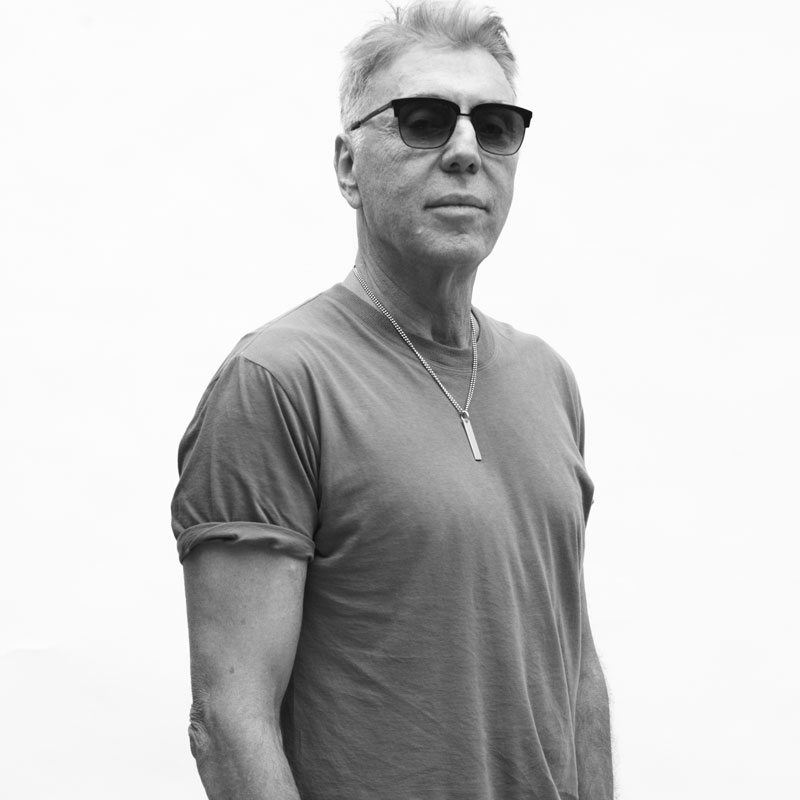
Ilan Pivko
Pivko Architects
One of Israel’s most influential architects, Ilan Pivko’s key projects include Tel Aviv’s Vox nightclub, the 4 Florentine complex, and the Jaffa Sea Shell residential complex, where he also keeps a home.
How has the architecture of Israel influenced your work?
There's a sense of living where "everything happened" which is almost sensual and gives you a very rooted feeling. Also the 20th century architecture and Bauhaus style has influenced me a lot.
Among the Israeli architects, whose work do you admire most?
I love the work of Erich Mendelsohn.
What are the advantages of working as an architect in Israel?
The feeling of being a part of a creation of a new state and the huge birth rate - 2.9 children per couple - which creates a very big demand for architecture and buildings, so we have a lot of work!
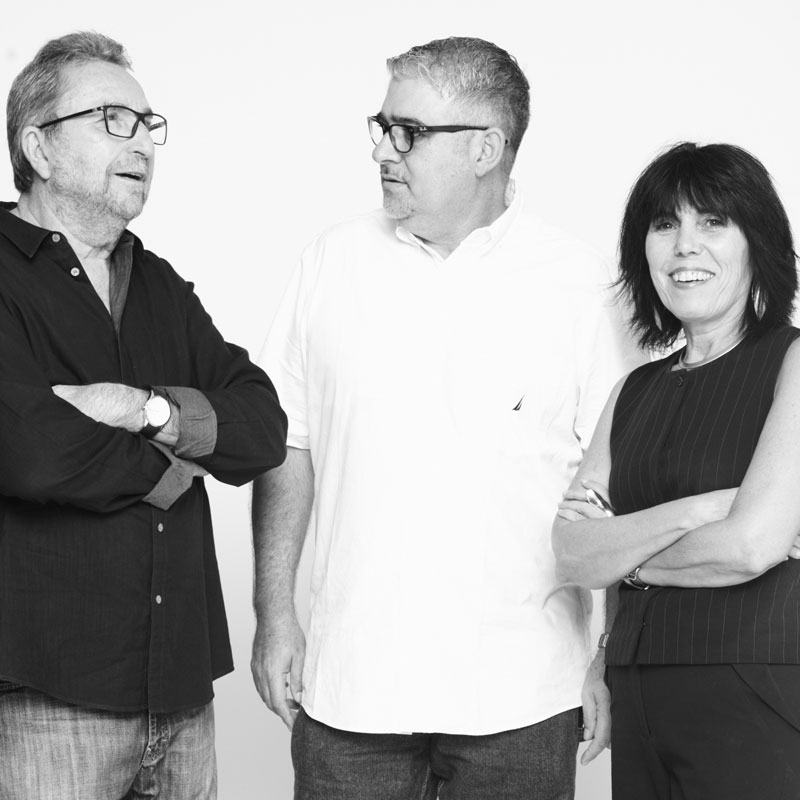
Yossi Sivan, Shemtov Tzrouya & Rachel Feller
MYS Architects
www.m-y-s.com MYS architects is one of the largest and most influential architecture firms in Israel, and a result of the fusion of the firms of Yaski Sivan, conducted by Yossi Sivan and Avraham Yaski, and Moore, conducted by Moore Yitschak and Moore Amihud. MYS Architects' portfolio is highly diversified, comprising residential and office skyscrapers, malls, medical centres, hotels and urban design.
How has the architecture of Israel influenced your work?
I grew up surrounded by modern architecture, therefore the historical buildings had a negligible effect on me. I was more affected by villages and traditional Arab buildings, with their scale, flat roofs, the white colour, play of light and shadow, and their inner courtyards.
Israel, particularly Tel Aviv, is spoilt for modernist architecture. Which is your favourite modern building in Israel?
The modern architecture of the 21st century made Tel Aviv what it is today. Some of my favourite buildings are Ben-Gurion University, the Azrieli Center, Yoo Towers, Akirov Towers and the Electra Tower.
What are the advantages of working as an architect in Israel?
The scope of construction is huge in general and in particular if comparing to the population size, there is a good variety of types of projects that we are designing, and the entrepreneurs are mostly open-minded.
Among contemporary Israeli architects, whose work do you admire most?
I am impressed by the work of Bracha Chyutin, who works with her husband Michael. Most of their work is focused on public buildings and shows great architectural quality.
How does the climate impact on your work and how does it affect what you design?
Usually I design my buildings so they take advantage of the view, as well as using energy-saving smart glass and reintroducing balconies to residential buildings.

Irit Axelrod
Axelrod Architects
Axelrod Architects is a design-oriented, comprehensive architectural firm that creates distinctive residences, institutional and commercial buildings and interiors, in the modernist style. Known for its attentiveness to fine detailing, honest expression of materials, and clean, simple forms, the timeless, serene and minimalist designs of Axelrod Architects evoke a sense of quiet power without being overpowering. Key projects include the Ben Gurion Heritage Institute building and the minimalist C House in Tel Aviv.
How has the architecture of Israel influenced your work?
My primary influence has come from the plethora of Bauhaus and International Style buildings which make up the White City architecture in Tel Aviv.
Israel, particularly Tel Aviv, is spoilt for modernist architecture. Which is your favourite modern building in Israel?
The Tel Aviv Museum of Art. There is such a strong contrast between the existing structure, which was a very respectful brutalist concrete structure built in the 1970s, and the hi-tech environment of the new building.
What are the advantages of working as an architect in Israel?
There seems to be less hesitation to new concepts, which has led to ‘out of the box’ thinking and a very creative dialogue between architect, client, and contractor. I’m steadily bringing these same ideas to the US with positive results.
Among contemporary Israeli architects, whose work do you admire most?
I respect the work of Pitsou Kedem, a fellow modernist with whom I share a similar design philosophy. Pitsou’s projects are all-encompassing and reflect a ‘total-design’ approach, since he considers each detail and material in the process and how it will inform the design.
How does the climate impact on your work and how does it affect what you design?
The weather has always been an important factor to consider in the design of our buildings. In order to maintain a comfortable living environment throughout the entire day, we focus on optimal building orientation, a building layout that maximises daylight without sacrificing comfort, and a very functional use of indoor/outdoor space.
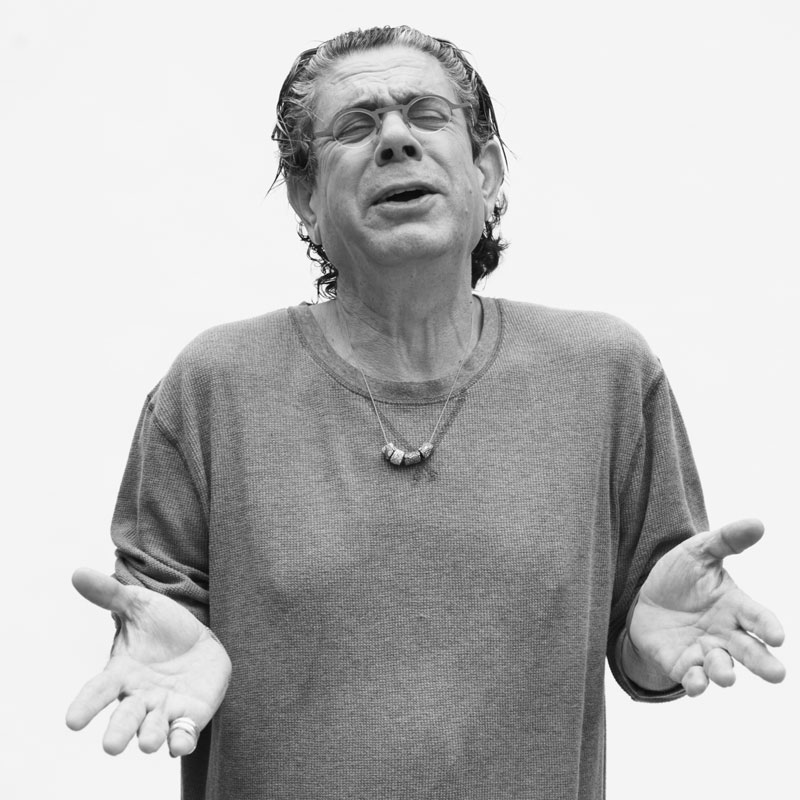
Yonatan Monjack
Yonatan Monjack Architect
Established in 1989, Yonatan Monjack is an architectural firm specialising mainly in private houses, luxury apartments and boutique hotels, such as the Artchuk guest suites in Kfar Vradim, and also acts as an advisor to large construction companies, working in Israel, US and Africa.
How has the architecture of Israel influenced your work?
I grew up in the US and France, and later lived for a long time in Jerusalem, so I am influenced by a wide range of history and cultures. Therefore, my architecture lacks the desire for definition. I like to use recycled and old materials in combination with contemporary and modern materials. The use of these materials and details is part of the story of the country, the place, the climate, the client and the craftsmen involved.
Israel, particularly Tel Aviv, is spoilt for modernist architecture. Which is your favourite modern building in Israel?
The Tel Aviv Museum of Art, but only the old wing! It is designed by Dan Eytan and Yitzhak Yashar and it is a modest building, a museum in every sense of the word, creating a space for art in the name of art.
What are the advantages of working as an architect in Israel?
A wonderful openness of the Israeli client to global cultures. The understanding and willingness of the Israeli client to work as a team; what I want, what I need and what is the right story for the project. The huge diversity of amazing craftsmen, carpenters, stone masons, blacksmiths, locksmiths and so on.
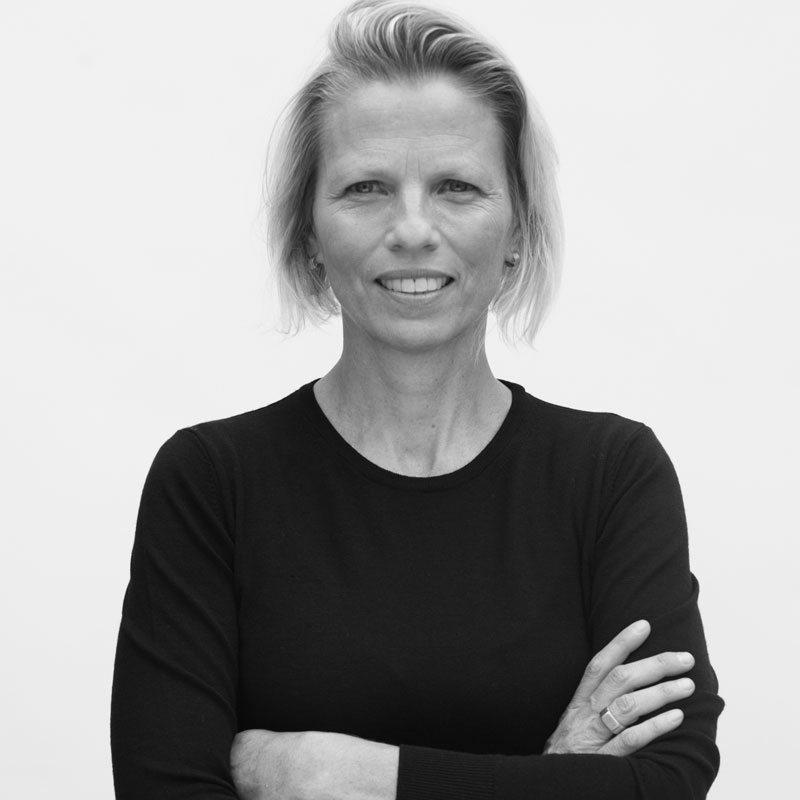
Daniela Plesner
Plesner Architects
Plesner Architects was established in Israel in 1972 by Ulrik Plesner, who was later joined in 1995 by his daughters Daniela and Maya. The studio’s portfolio includes educational projects, public buildings, hotels, private residences, parks and small and large town plans. Best known works are the Daniel Amichai Centre for Rowing and Nautical Studies on the Yarkon River in Tel Aviv, the Bet Gabriel community centre on the Sea of Galilee, the new campus of the Walworth Barbour American International School near Tel Aviv, and various private residences. The firm is now working on a boutique desert hotel in the Aravah valley, and on a few educational campuses.
How has the architecture of Israel influenced your work?
The architecture of the traditional historical buildings is dominated by the abundance of good stone, the hot climate and the lack of timber – meaning very thick walls and cross-arched ceilings with consequent heavy stone and earth-filled roofs and walls, which, together with small windows, are wonderful heat and coolness moderators. It is only marginally applicable in today's circumstances. What we have learned and apply in our own way from the fine traditional architecture, is the importance of shade – it is both beautiful and cheap, and you can sit happily in it for the greater part of the day and evening, and it keeps the sun off the windows and reduces the indoor build-up of heat (or need for air conditioning). We also have realised the importance of smallish courtyards with plants, like in old Jerusalem houses. Israel, particularly Tel Aviv, is spoilt for modernist architecture.
Which is your favourite modern building in Israel?
Without doubt, the Israel Museum in Jerusalem. What are the advantages of working as an architect in Israel? Israeli people are adventurous, full of initiative and creative, and therefore fun to work with. The process of work is never boring as every day brings new ideas and solutions.
Among contemporary Israeli architects, whose work do you admire most?
Kimmel Eshkolot because they are serious professionals, great people, and consistently produce good and beautiful buildings without trying to make icons.
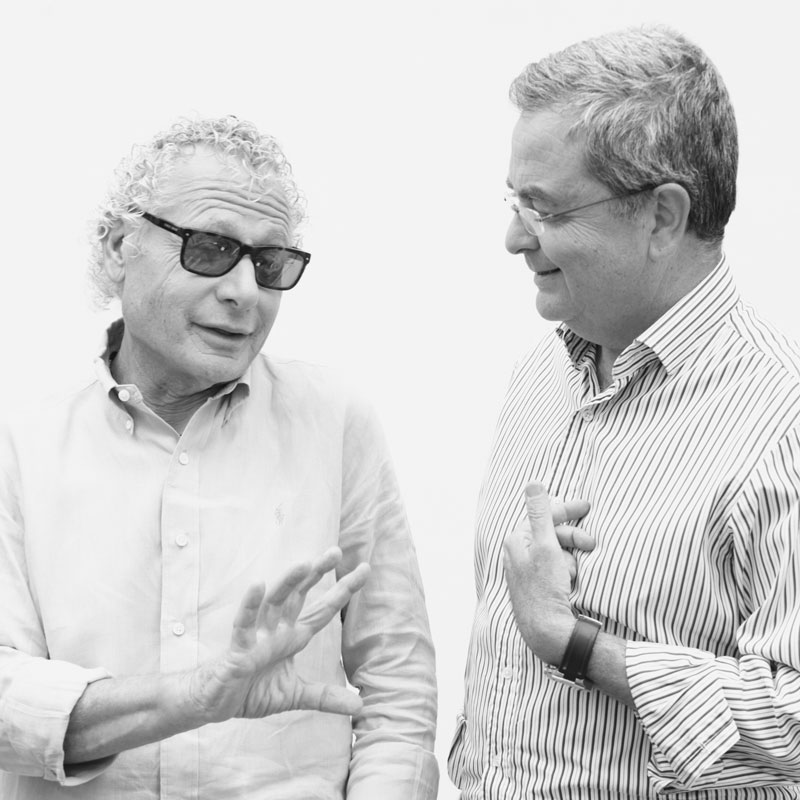
Hanan Peri & Shalom Davidovich
Peri Davidovich Architects
Established in Tel Aviv in 1988 by Hanan Peri and Shalom Davidovich, Peri Davidovich is today one of the leading architecture and design firms in Israel. The practice, comprising 15 architects and designers, takes on a wide range of public, private and commercial projects throughout Israel, Europe and Africa. Key projects include a 12,000 sq m palazzo in the Nigerian savannah, the largest private home ever designed by Israelis, and the Ferrari Maserati showroom in Tel Aviv.
How has the architecture of Israel influenced your work?
These days the effect of historic buildings is very low. Israeli architecture and Israel as a young modern country trying to position itself in the global modern world is the most influential thing here.
Israel, particularly Tel Aviv, is spoilt for modernist architecture. Which is your favourite modern building in Israel?
Yaakov Rechter’s sanatorium in Zichron Ya’akov, Ron Arad’s Design Museum in Holon and Al Mansfeld’s Israel Museum in Jerusalem, which combines modern architecture with traditional Arabic influences and topographic background.
What are the advantages of working as an architect in Israel?
Israel is a young country with many options and opportunities for building and design.
How does the climate impact on your work and how does it affect what you design?
Hot climate and very strong light affect the design. We try to plan large openings and use a lot of external areas so we can create free flowing structures.
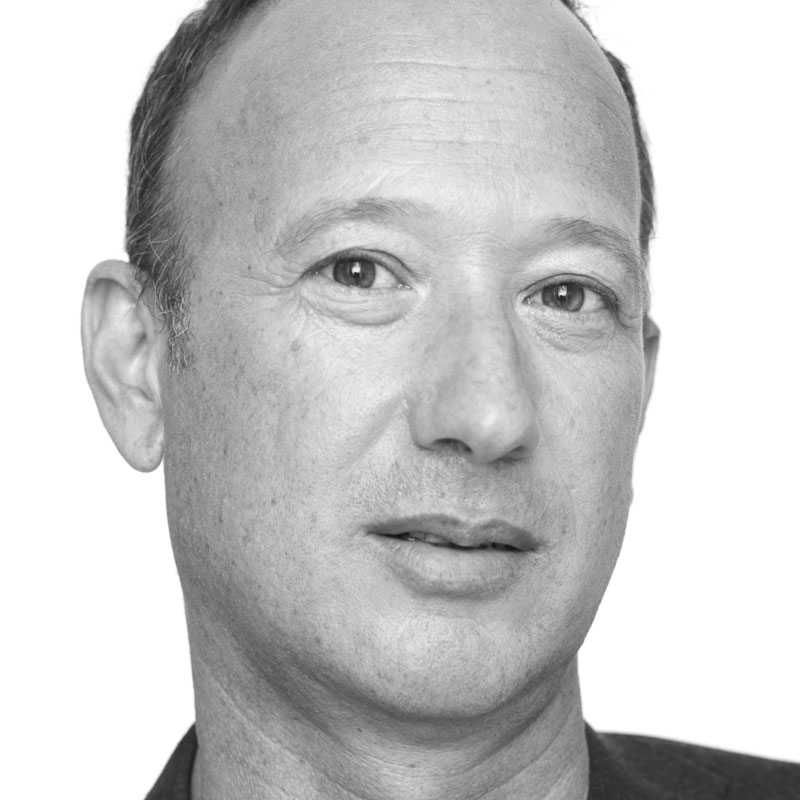
Ami Szmelcman
Gottesman Szmelcman Architecture
Founded in 2003 by Asaf Gottesman and Ami Szmelcman, Gottesman Szmelcman Architecture is an international practice with branches in both Paris and Rishpon, Israel. It focuses on projects requiring innovative, multidisciplinary solutions, and key projects include the Litvak Gallery at Museum Tower, Tel Aviv, as well as mixed-use development OVO Wroclaw, currently under construction.
How has the architecture of Israel influenced your work?
Most of our work in Israel is mainly in the Tel Aviv area or in the north where the context has been mostly related to the modern Bauhaus movement or to universal modern architecture rather than traditional local architecture.
Israel, particularly Tel Aviv, is spoilt for modernist architecture. Which is your favourite modern building in Israel?
Probably the Mivtachim sanitarium in Zichron Ya’akov designed by Yaakov Rechter.
What are the advantages of working as an architect in Israel?
The ideal and privilege of contributing to the building of this very special and controversial country, and contributing to the culture of its people and society.
Among contemporary Israeli architects, whose work do you admire most?
Probably the work of Bracha Hayutin.
How does the climate impact on your work and how does it affect what you design?
We must take into account the very strong light, the heat and the dust when considering the orientation of the buildings, the sizes of windows, the angle of shading elements, the thickness of walls and materials used.
Do you like to work with materials indigenous to Israel, and if so, which particular materials?
When it’s possible and if we have the choice, we will choose Israeli products. The most basic is concrete, and then there are local stones and other cladding materials, such as the kind that Caesarstone produces.
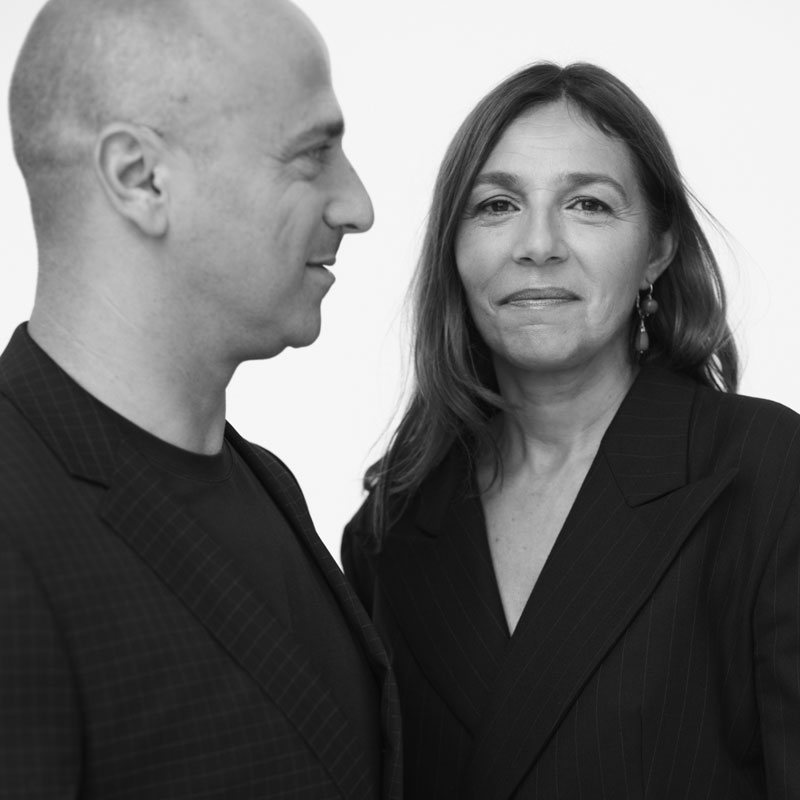
Itai Paritzki & Paola Liani
Paritzki & Liani Architects
Co-founded by Paola Liani and Itai Paritzki in 2001, Paritzki & Liani Architects creates spatial work conducted in the layered and complex relations between architecture and its context. Key projects include cutting-edge Tel Aviv boutique FabLab, and Barud House, a modernist private residence outside Jerusalem.
How has the architecture of Israel influenced your work?
Typologies, artefacts, traces of the region and its cultures are fundamental aspects in our observations. We are dealing here in Israel with multi-implanted codes of architecture from three secular religions (Catholic, Jewish and Muslim). We are interested in the interweaving typologies of certain monuments. The recursive history here that is evident in many other sites of the country, the prominent composition of paths, archeology and civil history, becomes a rich source of inspiration when developing an architectural language of our own.
Israel, particularly Tel Aviv, is spoilt for modernist architecture. Which is your favourite modern building in Israel?
The Weizmann House, designed by Erich Mendelsohn, is one of the most intriguing buildings here in Israel.
What are the advantages of working as an architect in Israel?
One word can describe the main advantage of working in Israel as an architect and it is ‘change’. Our office is located in Tel Aviv, a city that was chosen in 2012 and in 2013 by the Wall Street Journal and the Urban Land Institute as the second most innovative city in the world. Our clients have an average age of 28 to 45. They have means and vision – therefore, it is an interesting process thinking together.
Among contemporary Israeli architects, whose work do you admire most?
David Yannay, for his vision and his research regarding the genetic development of structures. A great mind.
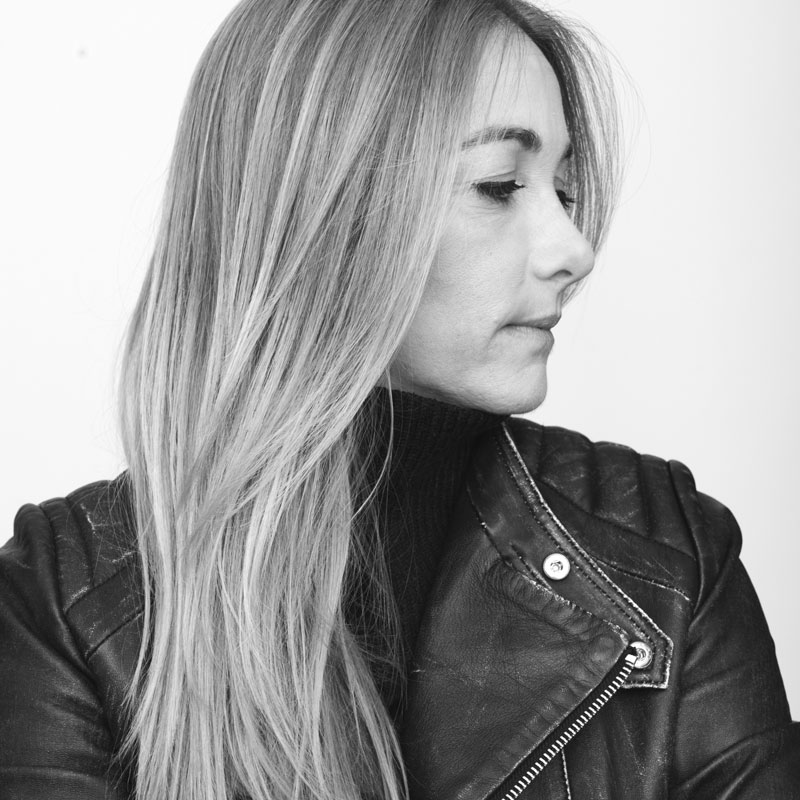
Dana Oberson
Dana Oberson Architects
Dana Oberson Architects is a multidisciplinary design studio. The studio was established in 2002 and has been involved in a wide range of projects in Israel and around the world. The studio specialises in the planning and design of private houses, luxury apartments and boutique hotels.
How has the architecture of Israel influenced your work?
I believe the artistic turf of the Israeli designer is directly influenced by the rather complicated historical environment which we live in. My work is mainly influenced by the architectural details and materials used in Muslim and Templer architecture in Israel, details that benefit from the unique climate in Israel. I like to give a contemporary interpretation for historical architectural elements and integrate them in my projects. For example, I have used modern interpretations of the mashrabiya, a pierced screen that gives shade and protection from the hot summer sun while allowing the cool air from the street to flow through.
Israel, particularly Tel Aviv, is spoilt for modernist architecture. Which is your favourite modern building in Israel?
The Museum of Art, Ein Harod, by Samuel Bickels. This unique building is considered to be one of the world’s earliest examples iof modernist museum architecture based on natural lighting. The architecture is misleading at first glance with its rather sealed facades, ignoring the splendid valley of Jezreel, which it overlooks. However, the real issue lies in the way the building ‘controls’ the light that enters it. This architectural approach makes it, in my opinion, a significantly sensitive building to its function as an exhibition museum and especially to local climatic conditions. The architectural filters block devastating solar radiation and allow constant light penetration.
What are the advantages of working as an architect in Israel?
Israel is a rather young country which inhabits an evolving society. The rapid growth of population produces an ongoing necessity for development and change in the field of construction and architecture. The Israeli weather and climate is a challenging aspect to be considered design-wise and could be considered a benefit. As an architect I naturally aspire to design pleasant indoor and outdoor spaces, despite the long summer and the hot sun.
How does the climate impact on your work and how does it affect what you design?
It is impossible to design any space in Israel without dealing with the hot weather and solar radiation. In my work I deal with the filtering aspect a lot. Do you like to work with materials indigenous to Israel and f so, which particular materials? Gravel, concrete, natural iron and silicate bricks.
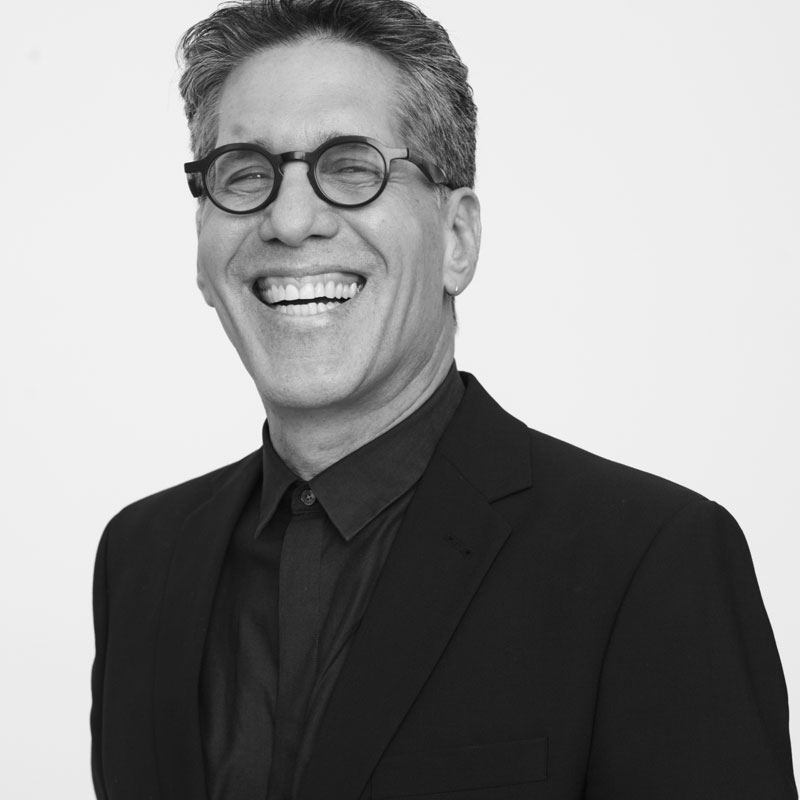
Joseph Friedman
J P Friedman & Associates
J P Friedman & Associates is an architectural and interior design firm previously based in New York and Miami Beach, but based in Tel Aviv since 1996. The firm specialises in grand-maximalist, luxury homes for private clients. Key projects include the reptile house at Haifa Zoo and the Versace store in Tel Aviv.
What are the advantages of working as an architect in Israel?
Technological wealth, sophisticated and open-minded clients. and a perfect climate. For me, the weather is never warm enough. The closeness to the beach and the magnificent views of the Mediterranean are a constant inspiration!
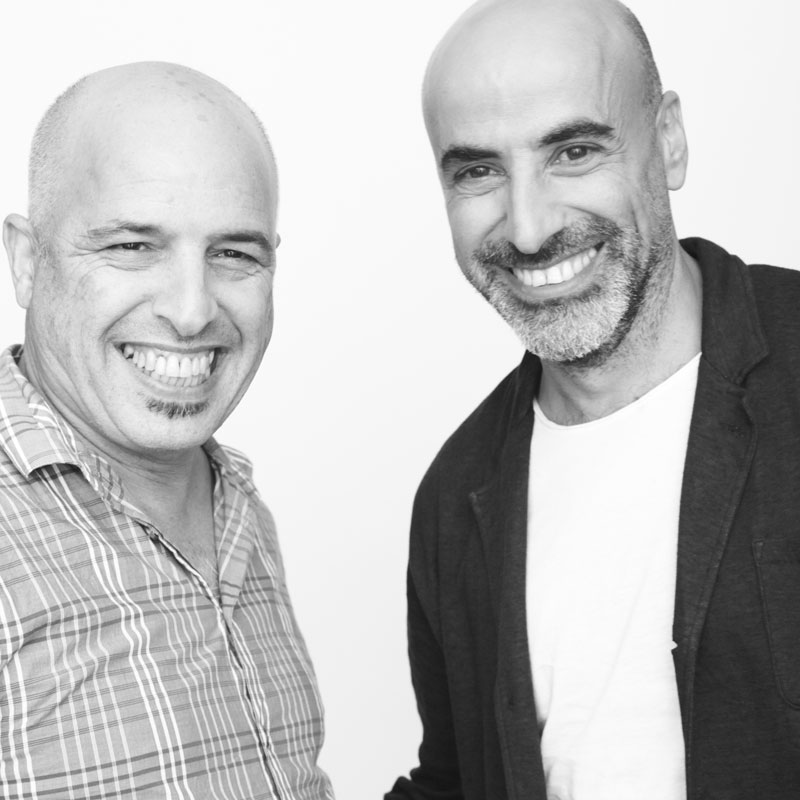
Michael Ankava & Uri Ben Dror
StudioMU
Specialising in commercial interior design and architecture, Studio Mu also makes site-specific pieces, such as furniture, light fixtures, retail display structures and lighting design for commercial spaces, aiming to refine all the elements that create the experience through consideration of factors such as location, environment, budget, purpose and target clientele.
How has the architecture of Israel influenced your work?
The influences on our work are more subtle and indirect. We are influenced by the proportions of space, local light and materials, and the traditional and historical design attitudes to these aspects. As a Tel Aviv-based studio, we are influenced by the Bauhaus architecture and design that are prominent in the city.
Israel, particularly Tel Aviv, is spoilt for modernist architecture. Which is your favourite modern building in Israel?
The original Tel Aviv Museum of Art building.
What are the advantages of working as an architect in Israel?
Being a young and very dynamic country, Israel challenges its architects into finding architectural and design solutions. Furthermore, having but a short history of local design allows us to be part of the trends influencing the creation of the local culture.
And what are the disadvantages?
The market is relatively small and, at times, low on budget. Among contemporary Israeli architects, whose work do you admire most? Ada Karmi-Melamede for her ability to weave local history into a modern, contemporary Interpretation. Weinstein Vaadia Architects for their ability to combine a modern and contemporary design with subtlety and becoming proportions. Bar Orian Architects for the scope of work of urban living buildings that rely on modern design while taking into consideration the aura of traditions and the White City.
How does the climate impact on your work and how does it affect what you design?
We give great emphasis to the control and filtration of light in our projects.
Blinds, mashrabiya, consideration of sun directions – all become an essential design detail.
Do you like to work with materials indigenous to Israel and if so, which particular materials?
We like to use local cast decorated floor tiling, iron door and window frames, wooden shutters and screens, silicate block walls, local stone and more. When possible technically, we like to maintain the original structure and expose the layers and history of the building and use it in our design.

Moran Palmoni
Moran Palmoni Architects
The studio specialises in a diverse body of projects for private homeowners and property developers both in Israel and overseas. Key projects include an American Colony house in Tel Aviv, a Greek island villa and a Jetsons-esque desert inn at Arava.
How has the architecture of Israel influenced your work?
Israel’s diverse and multi-faceted history produces rich and challenging planning context. A good example would be the Keren Complex, a preservation and new housing project in Tel Aviv. The building facades were covered with a durable stucco cladding that was used in Tel Aviv’s Bauhaus buildings of the 1930s. On top, openings were arranged in an orthogonal grid, displaying a two-dimensional texture and serving as a background to the local historic building fabric.
Israel, particularly Tel Aviv, is spoilt for modernist architecture. Which is your favourite modern building in Israel?
The Ein Harod Museum of Art, designed by Samuel Bickels. I admire the modesty and restraint of the structure, the beautiful way in which natural light filters in through the space, and the spatial harmony between the galleries and the inner courtyards.
What are the advantages of working as an architect in Israel?
Good architecture must stand the test of time, it cannot be implemented instantaneously. Any process requires patience, observation and rigour in order to gradually produce a local design tradition, surely the process of formulating design and environmental culture for a society as young as ours.
How does the climate impact on your work and how does it affect what you design?
The Mediterranean weather allows us to explore the outdoors most of the year. In my projects, I try to arrange the different functions as independent components that together form a single habitat. Transparent corridors and inner courtyards provide connection and transition among the spaces and allow a flowing movement between them. The garden is woven through the house, making it an indoor and outdoor experience at the same time, allowing each space to have its own outdoor area.
Do you like to work with materials indigenous to Israel and if so, which particular materials?
As an architect who lives and works in a Mediterranean landscape and climate, and is greatly influenced by modernism, I prefer using basic natural materials such as stucco, stone, steel and wood, that are not affected by changing trends, that connect the house with its surroundings, and bring a sense of comfort to the environment.
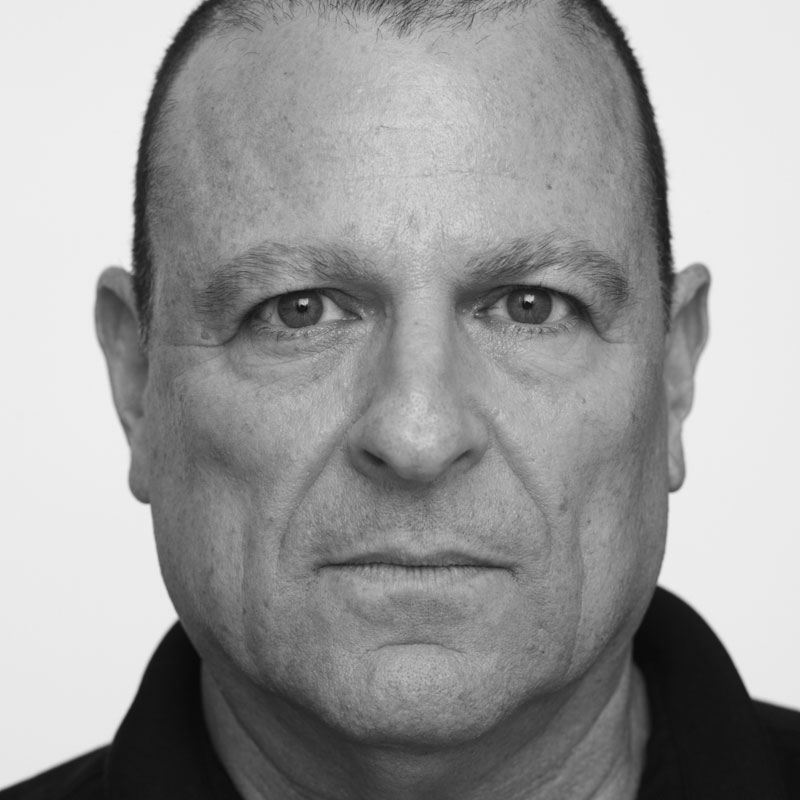
Oded Halaf
Oded Halaf Architects
Oded Halaf specialises in designing private estates, residential complexes, apartments, commercial interiors and customised projects. Recent projects include the interiors for the Amot Atrium Tower, currently under construction in Ramat Gan.
How has the architecture of Israel influenced your work?
The diverse past of the place I live in is of great significance to many nations throughout history, and the architectural expressions of Israel’s different cultures offers a wide base for my work, and the way I express things based on the reformulation of these architectural expressions. The use of regional architecture through the ages is marked in me by being a Jew and an Israeli. Once you understand the strong connection I have with the place, you can interpret or expand the meaning of my work.
Israel, particularly Tel Aviv, is spoilt for modernist architecture. Which is your favourite modern building in Israel?
The Habima Square auditorium in Tel Aviv, originally designed by Zeev Rechter, who was influenced by Swedish modernist architecture. Maybe part of my love for this building is affected by a strong connection I have with classical music, which is manifested by the Israeli Philharmonic Orchestra concerts held in this building.
Among contemporary Israeli architects, whose work do you admire most?
I feel my relationship with Israel’s architecture is part of my relationship with the culture that has been created in the last 100 years here, and I think that in order to emphasise the country’s wider cultural side I would choose a creator that represents this cultural side, the sculptor Yitzhak Danziger.
How does the climate impact on your work and how does it affect what you design?
Architecture has always dealt with weather. The climate is built into all my planning and design considerations, mainly due to the strengthening trend of sustainability
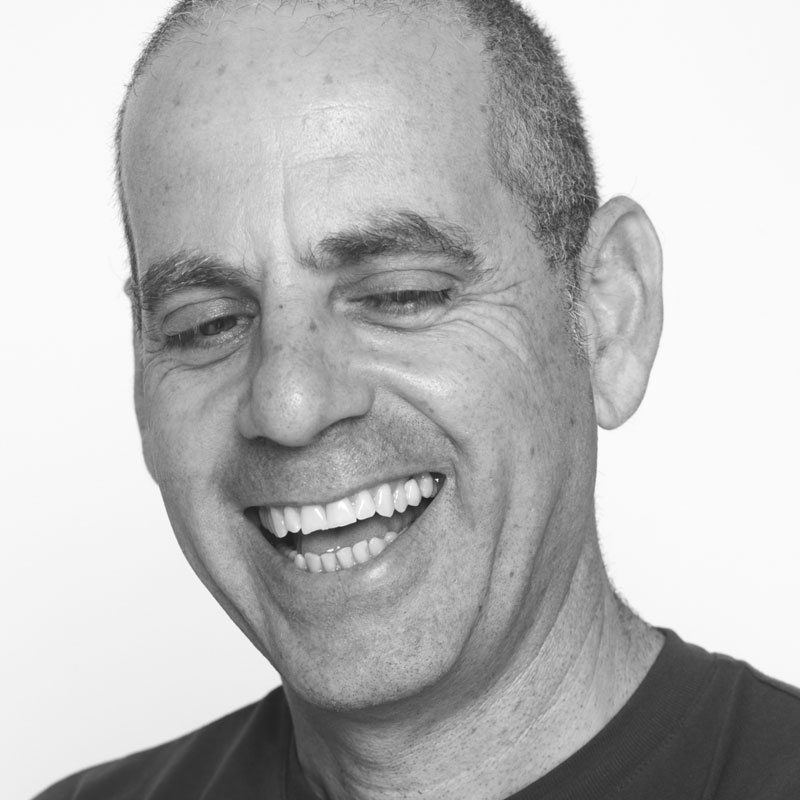
Ori Halevy
Auerbach Halevy
Founded in 2000 by engineer Daphna Auerbach-Biran and architect Ori Halevy, the studio focuses on both architecture and interior design projects. Two recent awards reflect their extra-wide spectrum: an award for the main garage of the Ta’avura Group and an award for the offices of Boeing in Tel Aviv (crowned as one of the 20 coolest offices of the world by Architizer). Other notable commissions are the Sodastream innovation lab and the HQ of Delta Galil.
How has the architecture of Israel influenced your work?
I experience modern cites as part of one global giant. I’m influenced by works in Korea, the Netherlands, the UK and everywhere. I apply regionalistic tools only when we work in strict historical contexts in places like Jerusalem and Jaffa. Israel and its cities are very young and modernism is our DNA.
Israel, particularly Tel Aviv, is spoilt for modernist architecture. Which is your favourite modern building in Israel?
The Weizmann House by Erich Mendelsohn and the Koffler Accelerator by Moshe Harel. I also love the International Style buildings in the heart of Tel Aviv. It is a one-of-a-kind collection that’s found nowhere else.
What are the advantages of working as an architect in Israel?
Never a dull moment.
And what are the disadvantages?
Never a dull moment.
Among contemporary Israeli architects, whose work do you admire most?
I admire the work of Ada Karmi-Melamede, who creates multi-layered, sophisticated buildings, echoing old ghosts of modernism. And I admire the villas of Pitsou Kedem which are simply immaculate. Do you like to work with materials indigenous to Israel and if so, which particular materials? I like local materials such as stone, concrete and glass.
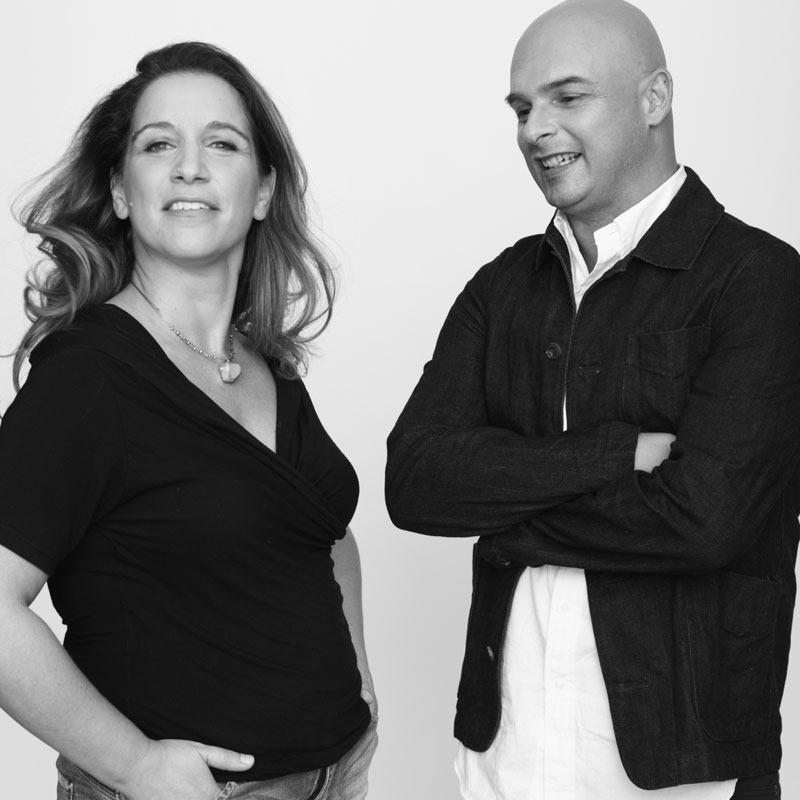
Ronit Barkol & Luciano Santandreu
SaaB Architects
SaaB design private residences, planning mostly single household villas in semi-rural environments, concentrating on making the best use of natural site conditions in order to gain climatic comfort and solve the client's programmatic needs, while never compromising on design in the process.
How has the architecture of Israel influenced your work?
It is true that Israel has a wide range of fascinating historical structures, but our inspiration is mostly derived from later periods in architecture, namely the early modernist repertoire and its International Style buildings. Yet we always try to express our respect to the local historical architecture by relating to the context of the project, and applying a modern contemporary view on past materials, techniques and planning principles.
Israel, particularly Tel Aviv, is spoilt for modernist architecture. Which is your favourite modern building in Israel?
The Gottesman Etching Center at Kibbutz Cabri. The current building was planned by Szmelcman-Gottesman and is located in north Israel, far from the well known cultural centres of Tel Aviv or Jerusalem. In our opinion, this building achieves high aesthetic values regardless of a ‘down to earth’ budget, due to accurate minimalism and fine design.
What are the advantages of working as an architect in Israel?
Being a planner in a young growing country, practically building itself on the move, gives us a rare chance to take part in major historical processes, as well as many minor acts of building, which always take place in this ever evolving country. Another advantage of a totally different kind has to do with the typically warm and open character of Israeli clients, which makes working on private homes a very intimate experience, and literally allows us to design 'ways of living' sewn to suit people's needs.
Among contemporary Israeli architects, whose work do you admire most?
Kimmel Eshkolot Architects, Mayslits Kassif Architects, and Pitsou Kedem.
How does the climate impact on your work and how does it affect what you design?
On the one hand, the relatively hot weather demands solutions in order to sustain climatic comfort. On the other hand, it allows exciting relations between interior and exterior spaces, and a wide range of options in this respect. We believe that the correct placement of the house on the site is extremely important because it determines its exposure to the sun and allows openings that enhance natural ventilation. Living in a warm climate also allows us to plan an outdoor alternative for many everyday activities, such as dining, reading, entertaining and playing.
Do you like to work with materials indigenous to Israel and if so, which particular materials?
We once planned a flat wood roof in a house in Galilee, applying a traditional local building method from Arab villages to an otherwise modern house. We used corrugated tin while planning in a countryside town that featured farming sheds and silos covered with this material.
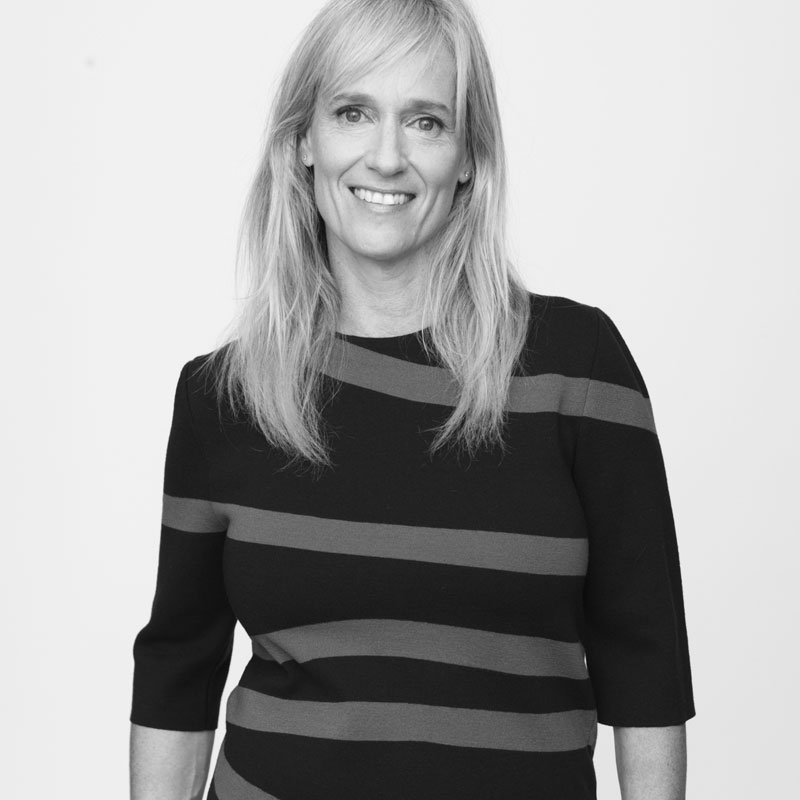
Sharon Ecker
Ecker Michael Architects
Ecker Michael Architects, established in 1999, is concerned with providing innovative and refined architectural outcomes that resonate a simplicity, conceptual rigour and material invention. Multidisciplinary with a boutique vibe, it specialises mostly in private houses, and takes a 360 degree approach, from the detailed design of the building to the smallest details of the interior design.
How has the architecture of Israel influenced your work?
I think that the multicultural buildings and monuments have a huge impact on the designing atmosphere. We have such a vast merging of styles in such a small country, I don't think such a unique combination exists in any other place in the world. On the one hand, it creates a kind of visual "chaos" and on the other hand, it makes your surroundings so much more interesting and diverse. But for me, the historical/traditional architectural style had an inverse impact since my architectural style and creations are very clean and modern. Our designs are very neutral, free of any constrains to a certain style, time period or trends. We have a strong belief in sustainability and building something that can stay relevant in the perspective of time.
Israel, particularly Tel Aviv, is spoilt for modernist architecture. Which is your favourite modern building in Israel?
I absolutely love the Tel Aviv Museum of Art (the new and the old one), the Habima Square auditorium and Gan Yaakov.
What are the advantages of working as an architect in Israel?
Since we are a very young country, there is constant development of the architectural view. That makes us, the architects, busy with a lot of work on our hands. Furthermore, there is a lot of room to grow, experience and practice architecture from the beginning of our professional path.
Among contemporary Israeli architects, whose work do you admire most?
I hold a lot of respect for the "founders generation" who still do wonderful work - Ram Karmi, Yaakov Rechter, Yizhak Yashar and Avraham Yaski to name a few.
How does the climate impact on your work and how does it affect what you design?
The Mediterranean hot weather calls for a lot of thought and consideration. I usually integrate lots of doorways to enable natural circulation of air, as well as conservation of warm air for the colder nights. The directions and angles of the house are also something I always consider when planning the design - the direction of the sun helps to deliver more light and warmth. Finally, using lots of shades, pergolas and growing flora helps in creating pleasant spaces for the very hot summer.
Do you like to work with materials indigenous to Israel and if so, which particular materials? I like to use local plaster without cladding of other materials
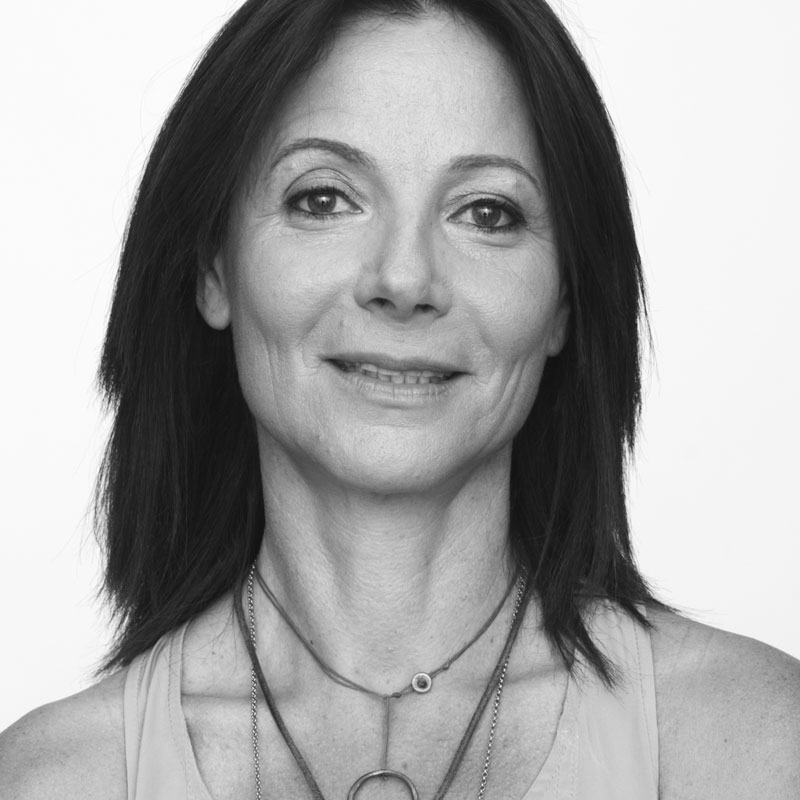
Sharon Neuman
Sharon Neuman Architects
Located in Rishpon and Caesarea, Sharon Neuman deals in planning and designing private residences, public buildings, offices, commercial spaces, exhibitions, event venues and product design. Neuman has presented varied architecture, product design, installation and photographic works in numerous exhibitions, including two solo exhibitions.
How has the architecture of Israel influenced your work?
I think architecture cannot imitate the past, it has to learn from it but be a sign of the times. I derive most of my inspiration from modern architecture.
Israel, particularly Tel Aviv, is spoilt for modernist architecture. Which is your favourite modern building in Israel?
A small new project called Shneur House, designed by Yoav Messer Architects for the activities of Etgarim, a not-for-profit organisation that provides sports activities for the disabled.
What are the advantages of working as an architect in Israel?
A young, innovative nation with a lot of awareness to design – I find it to be a fertile ground.
Among contemporary Israeli architects, whose work do you admire most?
Iftah Hayner, a young architect with whom I am lucky enough to work. I find his thinking to be fresh and original, his design bright and inspiring, and his way of leading the clients towards their goals admirable.
How does the climate impact on your work and how does it affect what you design?
I'm very much aware of the sun's directions throughout the hours and the year, and try to plan accordingly. I'm also aware of the wind direction. I use passive shading and try to keep the use of air-conditioning to a minimum.
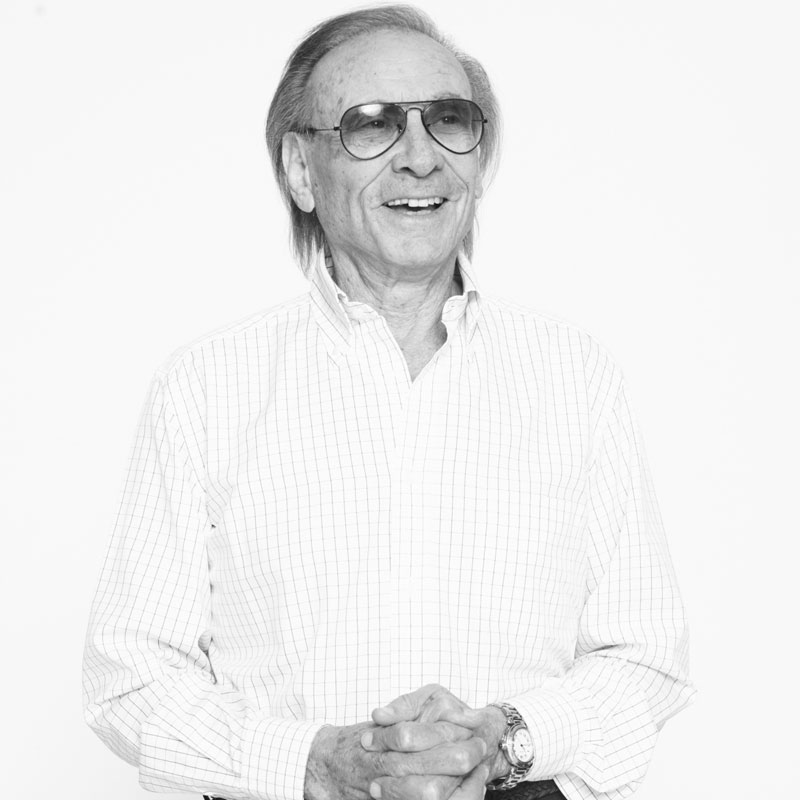
Shlomo Frenkel
Shlomo Frenkel Architects
Shlomo Frenkel Architects specialises in the interior design of private houses and luxury apartments.
How has the architecture of Israel influenced your work?
Israel is a new and modern country with great examples of the Bauhaus style.
Israel, particularly Tel Aviv, is spoilt for modernist architecture. Which is your favourite modern building in Israel?
The Supreme Court, and Mamilla and David Citadel hotels in Jerusalem, the Tel Aviv Museum of Art, and the Design Museum Holon.
What are the advantages of working as an architect in Israel?
Since our country is new, we are free from planning traditions and we are more open to modernity.
And the disadvantages?
There are none! All the new buildings in Israel for housing, offices and shopping centres have great modern design.
Among contemporary Israeli architects, whose work do you admire most?
Moore Yaski Sivan.
How does the climate impact on your work and how does it affect what you design?
We use many techniques for shading; non-transparent or tinted glass. Every store, office or house is very carefully air-conditioned.
Do you like to work with materials indigenous to Israel and if so, which particular materials?
I like to work with local marble and local carpenters.
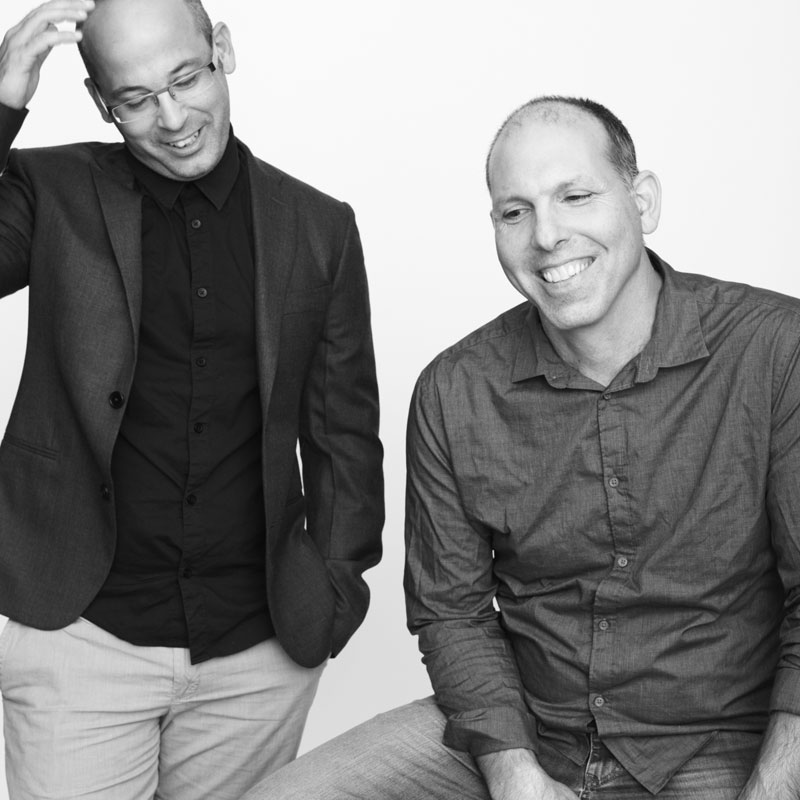
Shachar Lulav & Oded Rozenkier
SO Architecture
SO Architecture addresses contemporary design and planning, through a social and ecological approach, and has gained recognition and publicity for winning numerous competitions in Israel and abroad. In 2012 the office won the international open competition for its planning of the Natural History Museum in Jerusalem.
How has the architecture of Israel influenced your work?
We are mainly influenced by the International Style in Israel and overseas, and also by the Israeli brutalism of the 1950s and 1960s. The urban concept of the kibbutz is also important for us as we both grew up on one.
Israel, particularly Tel Aviv, is spoilt for modernist architecture. Which is your favourite modern building in Israel?
Habima Square auditorium in Tel Aviv, the old Tel Aviv Museum of Art, National Library of Israel, Weizmann House, Tel Aviv Port Promenade, and the First International Bank Tower on Rothschild Boulevard.
Among contemporary Israeli architects, whose work do you admire most?
We appreciate the work of Gaby Schwartz, Bracha and Michael Chyutin, and Pitsou Kedem.
How does the climate impact on your work and how does it affect what you design?
The hot weather creates harsh conditions in the Israeli summer, especially in situations of direct sunlight. In the shade, however, it is very pleasant, particularly on the coastal plain that takes in winds from the sea. We plan many openings for air circulation to the west and north-west to east. In addition, we plan effective shading solutions to openings to the south in order to prevent direct radiation.
Do you like to work with materials indigenous to Israel and if so, which particular materials?
As part of the accelerated establishment of the State of Israel, Israeli architecture has grown under harshly limiting conditions, both in materials and time. We often work with local materials and we see them as part of the local culture. Light plaster, exposed concrete in its many forms, both in walls and flooring, natural local stone in yellow and grey, as well as Caesarstone products for surfaces.
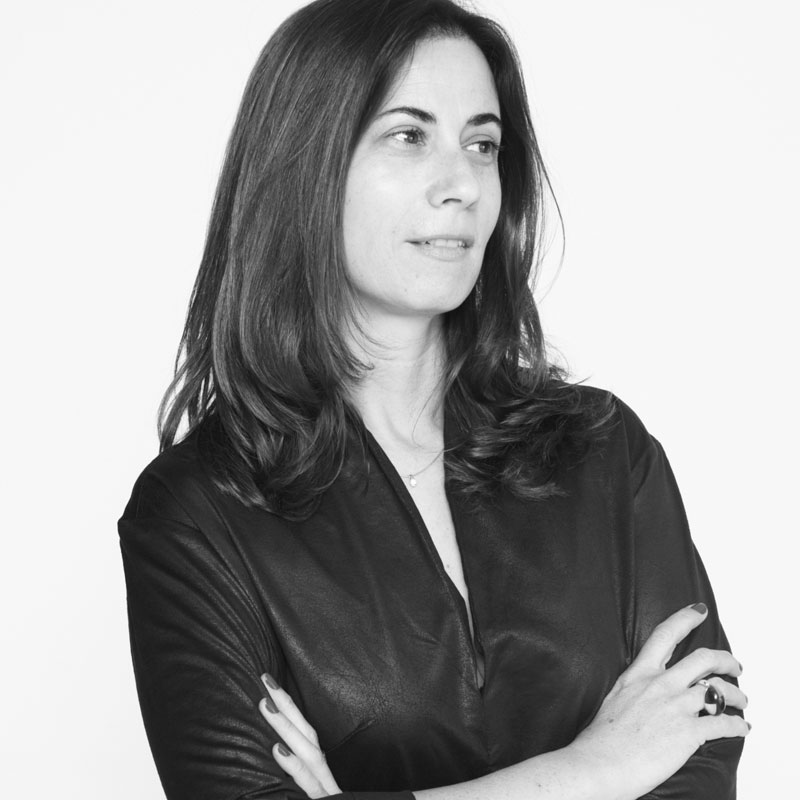
Tamar Kerner
Tamar Kerner Architect
Kerner’s work is particularly influenced by the International Style. The purposeful style that characterises this style, as well as the compatibility of the building to the local climate, is part of Kerner’s perception as a designer and affects the perception of space, which she tries to implement in her work.
Israel, particularly Tel Aviv, is spoilt for modernist architecture. Which is your favourite modern building in Israel?
The Israel Museum in Jerusalem which was designed by Al Mansfeld in 1965. The organic mechanism determined by Mansfeld, from which the plan derived, led to the creation of a buildings complex organically growing on top of the mountain. The skyline created by the museum is similar to that of an Arab village. The entire building corresponded with the spirit of the place. The great achievement of this architectural creation is the combination of modern perception of matter and space with a reference to place and history.
What are the advantages of working as an architect in Israel?
The ability to combine in my design historic architectural references that can be found in any site and period in the country with modern contemporary personal commentary.
How does the climate impact on your work and how does it affect what you design?
During the planning process I like to create flowing spaces opening one into the other to create a feeling of space and size, as well as the need to achieve flow and circulation of air. The hot weather and strong sun in Israel bring me, as an architect, to search for shaded spaces which cool the air and soften the strong light. The use of shading pergolas is an integral part of planning. The outer space of the building is an inseparable part of life in Israel. The social life of entertaining, playing and more are conducted in gardens and outdoor spaces. Shading of public and private space allows for all of that, as well as cooling the air before it enters the building.
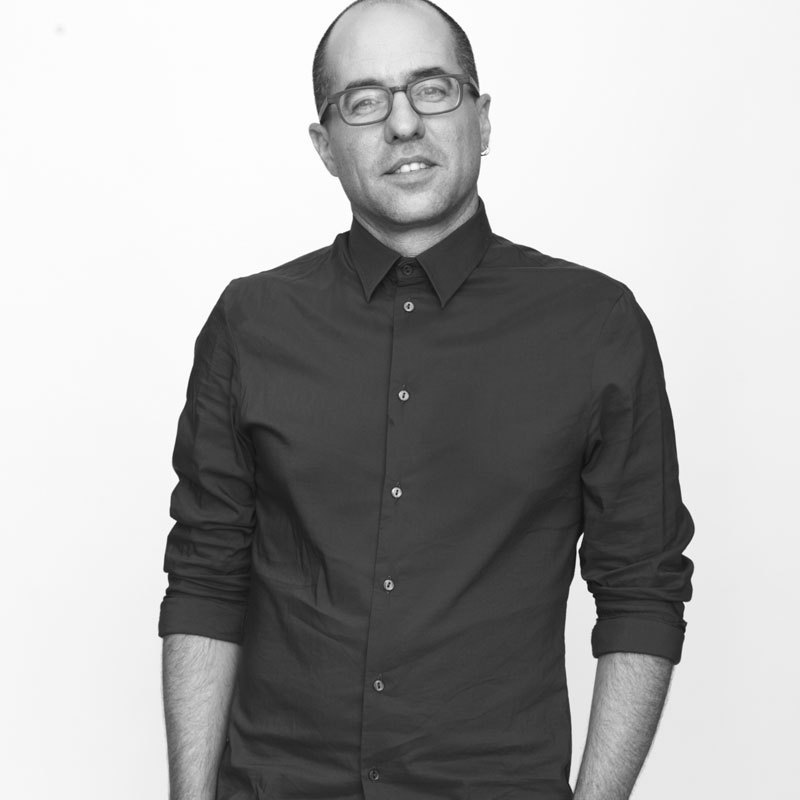
Arnon Nir
Arstudio
Founded by Arnon Nir and business partner Yishai Breslauer in 2002, Arstudio focuses on residential projects, art galleries, boutique hotels and unique interior projects.
How has the architecture of Israel influenced your work?
As an architect who focuses mainly on modern and contemporary design, I aim to give my own interpretation to the use of natural stone, one of the main materials used in ancient building projects. The vertical windows in the stairwells of Bauhaus buildings are another recurring motif in my projects.
Israel, particularly Tel Aviv, is spoilt for modernist architecture. Which is your favourite modern building in Israel?
The Mivtachim sanitarium designed by Yaakov Rechter in Zichron Ya'akov in 1968. This former convalescent home is currently being converted into a boutique art hotel.
What are the advantages of working as an architect in Israel?
I find the Israelis I have worked with to be very open to new and innovative architectural ideas. This might be due to the fact that Israel is a young state that does not have strong conservative architectural leanings or preferences.
Among contemporary Israeli architects, whose work do you admire most?
Dan Eytan for his ability to find simple and coherent solutions for complex situations, combined with a strong sense of space and materials.
How does the climate impact on your work and how does it affect what you design?
Shade elements that control the level of direct sunlight are part of my architecture. I like to incorporate a modern interpretation of the 'mashrabiya' into my designs. It’s an ancient mesh element that blocks the sun but allows the wind to get through.
Do you like to work with materials indigenous to Israel, and if so, which particular materials?
In some of my works I integrate wild natural stone, but I try to use it in a less traditional way, and to give it my own interpretation.
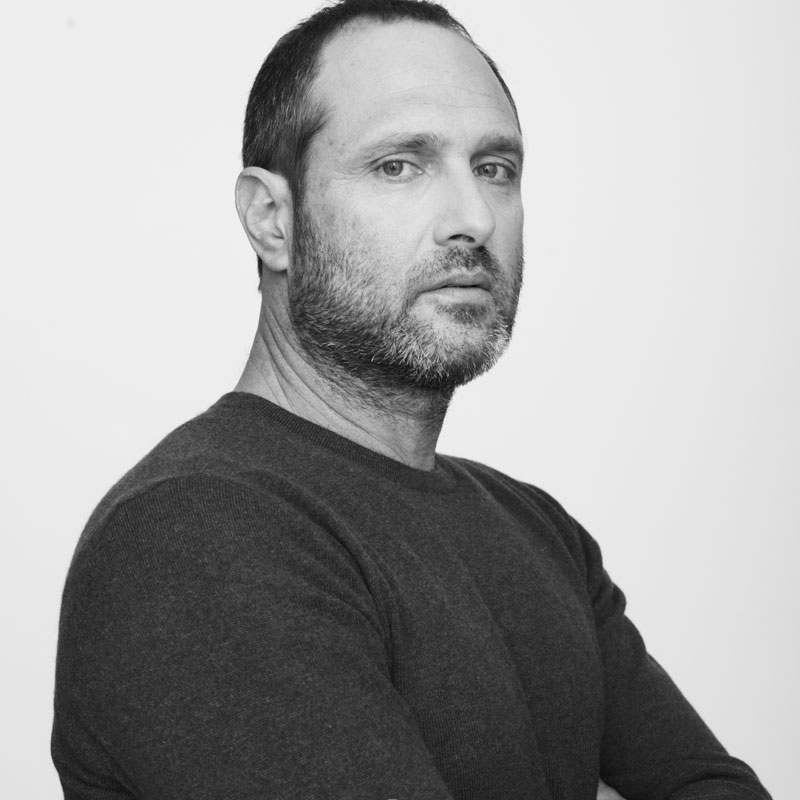
Gal Marom
Gal Marom Architects
Gal Marom deals with a wide spectrum of projects from residential towers and luxury villas to public buildings, offices and commercial interiors. The firm's team utilises the "building as a whole" design approach, enabling them to address different aspects of the project in different scales, while always meeting client needs.
What are the advantages of working as an architect in Israel?
Israel is a very young society, both culturally and physically. Most of the country was built on "context-less" land in a very fast development process. Along with the diverse cultural mix which is inherent in a society like ours, this allows us to work in a very constrain-free environment. I see this "lack of history" as a great opportunity. When I say lack of history, I refer to the fact that our building heritage is only about 100 years.There is a big gap to overcome when it comes to the architecture and design, and I see it as a privilege for us as architects to be part of the search for a local architectural language. Another aspect is Israel's location on the globe as the connecting point between Asia, Africa and Europe left us with no real relation to architecture and design traditions. We can, and we ought to search for this as part of the emergence of Israel's physical culture.
Among contemporary Israeli architects, whose work do you admire most?
This country is blessed with talents in every field of the design. Kolker Kolker Epstein is a leading firm with many excellent buildings in its record, and an intense cultural depth and vast knowledge of local and world architecture. Another is Ilan Pivko, who creates residential buildings and high-end villas. I think he is one of the most creative architects working here today. Avner Yashar has also succeeded in creating his own architectural language, as well as achieving an outstanding proficiency in all the technical aspects of high-rise buildings.

Tamar Jacobs & Oshri Yaniv
Jacobs-Yaniv architects
Jacobs-Yaniv Architects is a practice with considerable project-running experience, both in England and Israel. Their portfolio includes civic, residential and commercial projects, including new stores for Israeli homeware brand Golf & Co and children’s clothing brand Golf Kids.
How has the architecture of Israel influenced your work?
There are many types of buildings in Israel from different periods and of different cultural character, that influence us. Ancient settlements and fortifications such as Masada, Gamla and Nimrod are integrated wonderfully into the landscape. The relationship between public and private spaces is fascinating in old urban quarters such as Jerusalem and Acre. There are wonderful one-off buildings mixing International Style with Byzantine and Islamic influences that were built in the 1930s. Several English architects working for the British mandate were real masters of light and used local materials beautifully.
Israel, particularly Tel Aviv, is spoilt for modernist architecture. Which is your favourite modern building in Israel?
The Israel Museum in Jerusalem is a fantastic local adaptation of Mies' ideas combined with the local vernacular Arab village. The Mivtachim sanitarium in Zichron Ya’akov is a brutalist sculptural masterpiece.
What are the advantages of working as an architect in Israel?
The advantage of working in Israel, on one level, is that, in comparison to more "established" countries such as the UK, it is easier for young architects to break through. Relatively speaking, Israeli clients are open minded, enthusiastic and happy to take a chance. On another level, the advantage of working in Israel has to do with the wonderful climate and ideal light conditions. Having the rich cultural background spanning from old Muslim buildings to modernist concrete blocks, there is a lot to learn from.
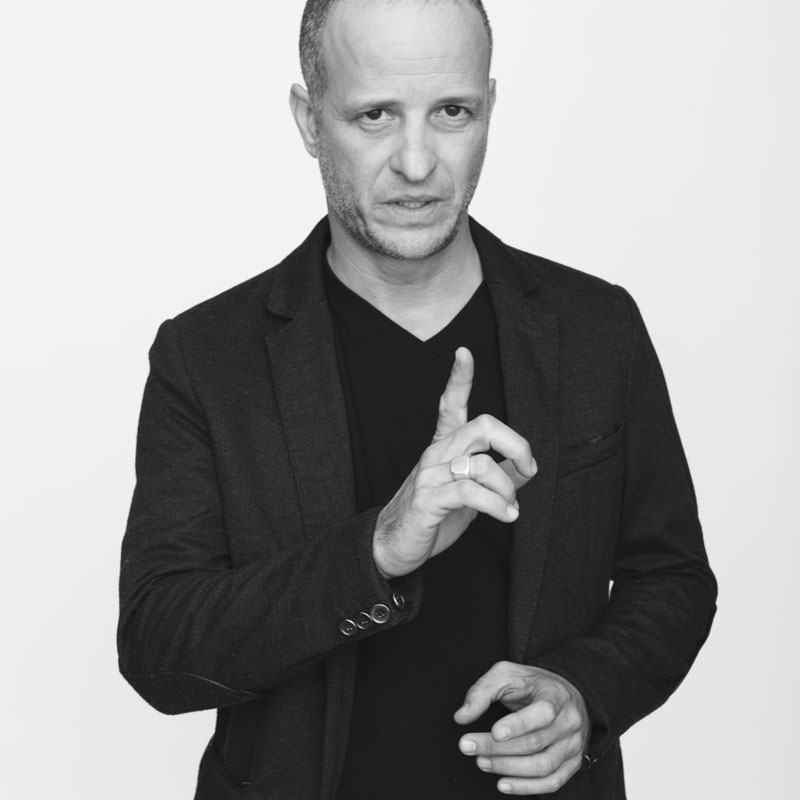
Yaron Tal
Studio Yaron Tal
Combining an innate sense of aesthetics with previous careers in the worlds of advertising and graphic design, Yaron Tal has a unique vision which he implements into every one of his projects. Studio Yaron Tal designed the interactive zones in Tel Aviv’s Google offices, and specialises in commercial and retail spaces, as well as restaurants, hotels and recreational zones.
How has the architecture of Israel influenced your work?
Every culture has its own unique impact and sometimes I take something of this heritage, but I always try to give my personal point of view and interpretation.
Israel, particularly Tel Aviv, is spoilt for modernist architecture. Which is your favourite modern building in Israel?
I spend a lot of time abroad and go via Ben Gurion Airport. I particularly like the new terminal, which makes good use of the natural light and of local designers. It is the portal to our country, and is the first impression of incoming visitors and the last chance to leave an impression when departing.
What are the advantages of working as an architect in Israel?
We have a special culture and many influences from all the world. We are very dynamic and have some of the most creative minds, especially in the younger generation. Our challenges make us push ourselves harder and no goal is impossible.
Among contemporary Israeli architects, whose work do you admire most?
Ron Arad is an amazing designer.
Do you like to work with materials indigenous to Israel and if so, which particular materials?
I like to use different Israeli motifs. For example, at the Google offices, we used imagery of the Mediterranean, the Dead Sea, orange orchards and many more.
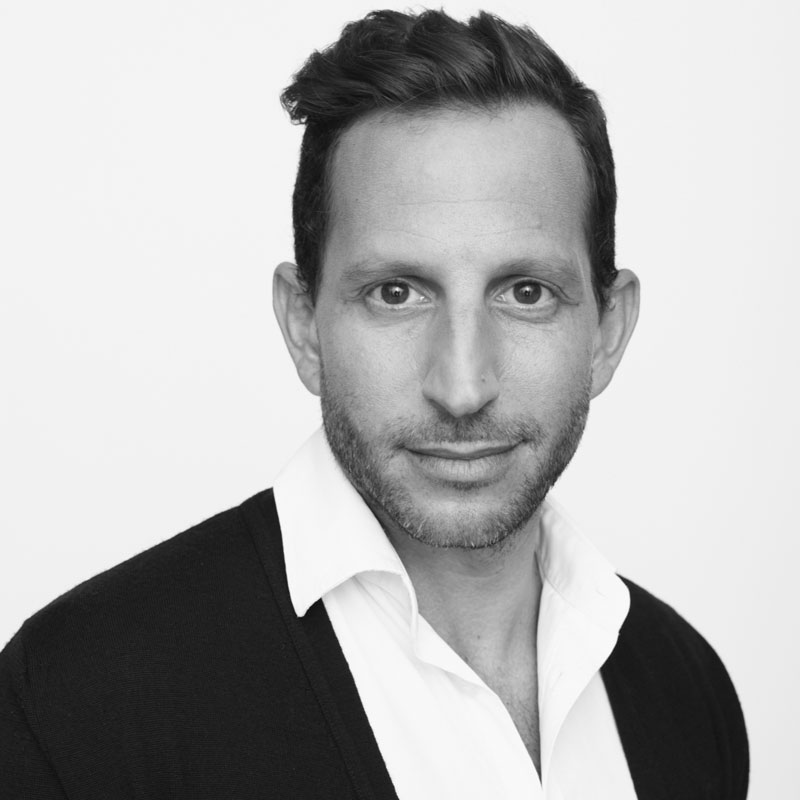
Daniel Hasson
Daniel Hasson Interior Architect
Established in 1999, Daniel Hasson specialises in hotels and high end residential projects, both in Israel and abroad. Notable works include Orchid Reef Hotel Eilat, Hilton Eilat Queen of Shiba, a private house in Hampstead, London, and a private house in Coronado, Panama.
How has the architecture of Israel influenced your work?
Though I was born and raised in Israel, I’m influenced by the international eclectic style. If a project I'm working on has a special location or architecture, it will affect the design and will be considered at the concept stage. In a project I worked on recently, which was located in front of the Russian Orthodox onion-shaped domes in Ein Karem valley, near Jerusalem, the gold onion shape had a powerful impact on the interior design of the house.
Israel, particularly Tel Aviv, is spoilt for modernist architecture. Which is your favourite modern building in Israel?
Pagoda House, an Eclectic Style building in Tel Aviv designed in 1924 by architect Alexander Levy, and the Weizmann House, built in 1936 by Erich Mendelsohn.
What are the advantages of working as an architect in Israel?
Because Israel is a young state and doesn’t have an old tradition of architecture, it feels easier to combine styles and create your own signature.
Among contemporary Israeli architects, whose work do you admire most?
Ada Karmi-Melamede and Zeev Rechter both succeed in combining modern design with an Israeli feel to create their own specific language.
How does the climate impact on your work and how does it affect what you design?
Light is blessed, but in Israel you have to work with it very delicately. Architects usually want to have the largest windows they can, but interior architects have to work wisely with shade to control the amount of light that will enter the space and give the right atmosphere needed.
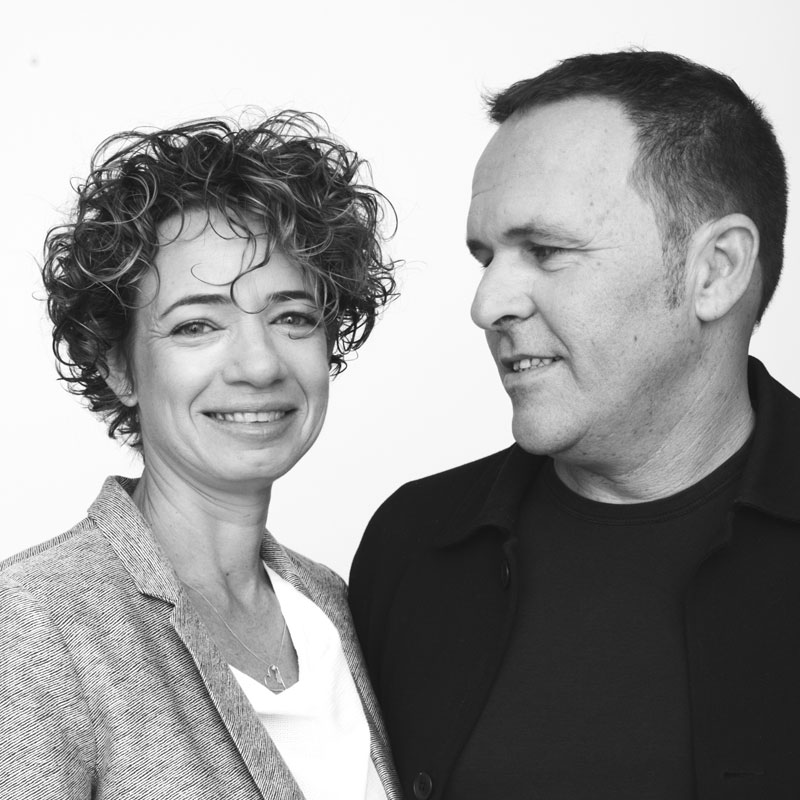
Yoav & Anat Anderman
Anderman Architects
Started in the niche of private high level housing. During the last six years business expanded our also to dwelling projects, commercial interior design, hotels and public buildings. Created the prize winning competition – community center for disabled people at Be'er Sheva.
How has the architecture of Israel influenced your work?
The question of historical influence on Israeli architecture is a tricky one. It looks like our history line is one of the longest in the world, and we have plenty of heritage, but at the beginning of the 20th century the amount of built-up area was almost zero. Active demography and wars gave us almost a blank page as a beginning. The International Style (1930-1950) influenced Israel much more, in our opinion, then Arab or Crusaders architecture. When Israel started to be built in massive volumes, that style was at the peak of its hype, and this was the corner stone of Israeli architecture as we know it today. Since that movement was part of modernism, it is natural for us to connect to that surrounding.
Israel, particularly Tel Aviv, is spoilt for modernist architecture. Which is your favourite modern building in Israel?
Instead of dropping one of the "big names" I’d prefer to choose one of the anonymous three-storey residential buildings of the White City. There are thousands of those, some better some worse, but most of them treat the city, the inhabitant, the human scale and the climate with great respect.
What are the advantages of working as an architect in Israel?
If you like pressure, you'll bloom. The Israeli atmosphere welcomes innovations - if you can deliver it, stay on budget and on schedule.
Among contemporary Israeli architects, whose work do you admire most?
I appreciate the work and values of Bracha and Michael Hayutin. Their projects have a good ratio between contemporary architecture and the basic, timeless, simple acts of architecture.
How does the climate impact on your work and how does it affect what you design?
This is one of the basic challenges of Israeli architecture. It is very easy to integrate systems to solve the problem, but the real challenge is to solve them with the basic tools of architecture. In some of our projects, objects like mashrabiya and shading elements are not only problems solvers, but the conceptual framework. In addition to their role (keeping the heat and sun beams out of the building), they also create very interesting natural light twists.
Receive our daily digest of inspiration, escapism and design stories from around the world direct to your inbox.
Rosa Bertoli was born in Udine, Italy, and now lives in London. Since 2014, she has been the Design Editor of Wallpaper*, where she oversees design content for the print and online editions, as well as special editorial projects. Through her role at Wallpaper*, she has written extensively about all areas of design. Rosa has been speaker and moderator for various design talks and conferences including London Craft Week, Maison & Objet, The Italian Cultural Institute (London), Clippings, Zaha Hadid Design, Kartell and Frieze Art Fair. Rosa has been on judging panels for the Chart Architecture Award, the Dutch Design Awards and the DesignGuild Marks. She has written for numerous English and Italian language publications, and worked as a content and communication consultant for fashion and design brands.
-
 Curvilinear futurism meets subtropical beaches at Not A Hotel’s ZHA-designed Okinawa retreat
Curvilinear futurism meets subtropical beaches at Not A Hotel’s ZHA-designed Okinawa retreatZaha Hadid Architects has revealed the design for the first property in Not A Hotel’s futuristic new Vertex collection, coming soon to southern Japan
-
 Gorden Wagener leaves the helm of Mercedes-Benz design after 28 years with the company
Gorden Wagener leaves the helm of Mercedes-Benz design after 28 years with the companyThe German designer is stepping down from the role of chief design officer at Mercedes-Benz. We look back at his influence and impact on the world of automotive and luxury design
-
 These Christmas cards sent by 20th-century architects tell their own stories
These Christmas cards sent by 20th-century architects tell their own storiesHandcrafted holiday greetings reveal the personal side of architecture and design legends such as Charles and Ray Eames, Frank Lloyd Wright and Ludwig Mies van der Rohe
-
 A poetic connection: Nendo's mammoth retrospective at Design Museum Holon
A poetic connection: Nendo's mammoth retrospective at Design Museum Holon -
 Debut design: attending Tel Aviv’s very first Israel Design Week
Debut design: attending Tel Aviv’s very first Israel Design Week